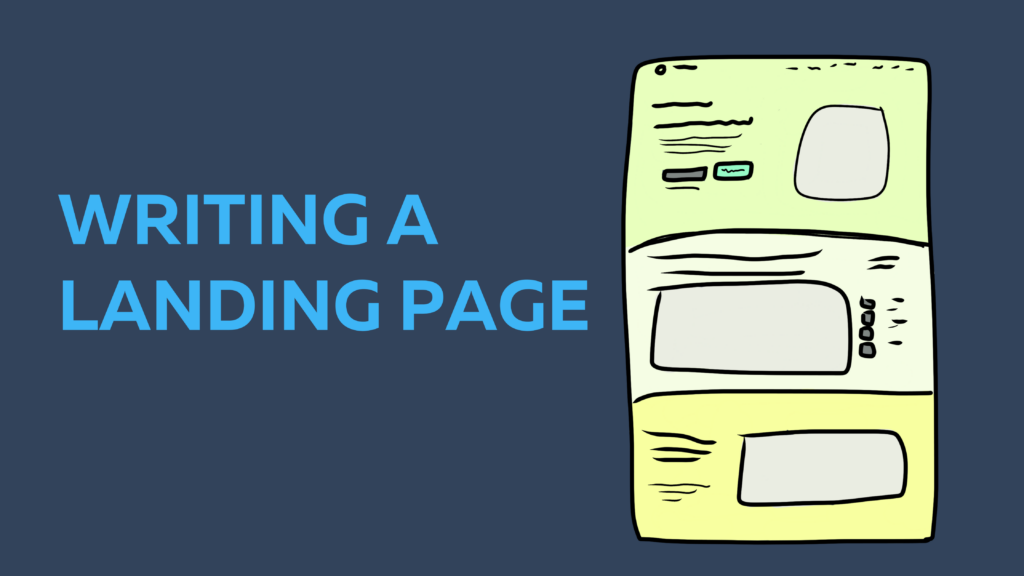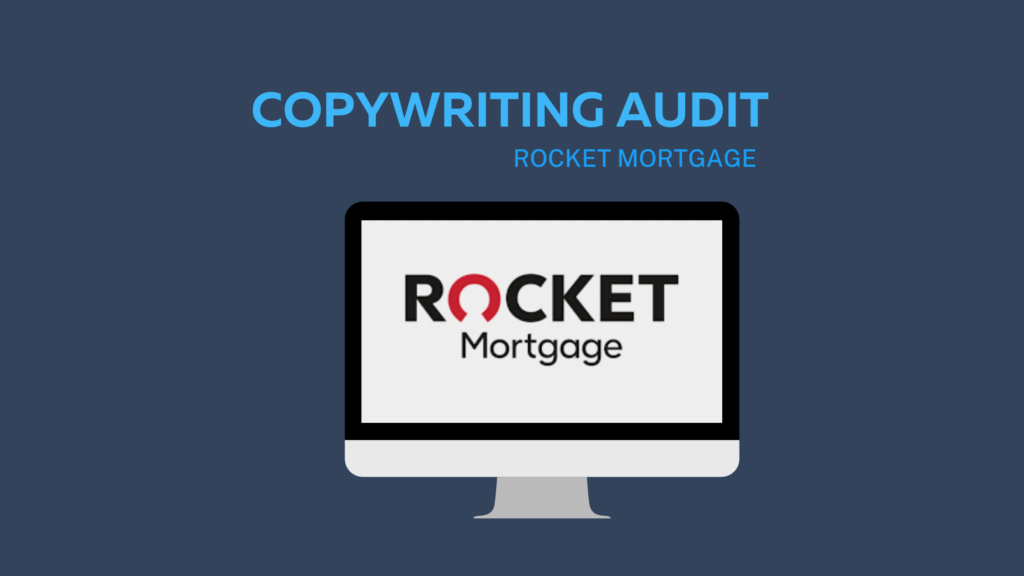Are you looking for a copywriter that can develop a landing page for you? Contact Me for a consultation.
As you build your business or startup, you need landing pages to move customers to action.
For example, you might need to make a sale or capture more emails. The success of your campaign will depend on how good your landing page is.
Webpages will always need to be tested and adjusted as you capture data and improve your company. But we can start with a foundation that positions you for great results.
When I develop landing pages, I add the following components:
A Short, Emotional Title (Header)
The biggest mistake I see brands make is crafting long headers that focus on ambiguous results. Have you seen a title like this?
You visit a website, read it, and even try to read more of the page, and you still don’t know what the business does.
Those first few seconds are everything, considering most people will leave if they don’t know what you offer. You can take advantage of these seconds by developing an emotional header and complimenting it with the right subtitle.
Why emotional? We want to highlight the benefits of your product. Those benefits should connect with visitors emotionally (which is responsible for most purchasing decisions).
For example, I recently worked with a client with the following header for their Home page: “Find the Right Talent to Grow Your Team Faster.”
We know what the brand does, and “faster” helps connect emotionally. But we can make this shorter and more confident, making a more profound impression.
Consider the headline we developed afterward: “Find Remarkable Talent, Fast.” It says the same thing but hits harder and connects with visitors. Then, we use a subtitle to clarify the exact service.
A Clear Subtitle
I enjoy subtitles because we can clearly state what we do after we paint a vision through our title.
For example, suppose we sold luxury cars and wanted to highlight the brand’s legacy (to create a sense of elite credibility).
In that case, our header might be: “100 Years in the Making” and the subtitle: “Custom, luxury automobiles built for the connoisseur.”
The subtitle tells visitors what offer you provide and hints at how it is done. After this point, the visitor should see your value. Then, they will consciously decide to continue reading or leave your website.
The header and subtitle are the essential parts of the landing page, and most of your time should be spent on these sections.
Call to Action Button
If you’ve spent the money and energy to send someone to your landing page, you need to make sure everyone knows where to go.
It hurts to see a landing or home page that states what the brand does and offers, but there is no clear step. That costs you money and missed opportunities.
If visitors have to guess the next step, they won’t take it.
Decide on what you want that step to be. Is it for a consultation? To sign up for your email list? Or do they buy right away? Define what it is. Once you do, create a button under the subtitle to allow visitors to take action.
The text should invoke action. Use phrases like “Start Today” or “Get Your Free Consultation.”
Benefits
Your landing page should communicate the emotional benefits of your offer. If you are buying a car, you aren’t purchasing a machine or transportation.
You are buying freedom, opportunity, and the wind in your hair. Study your customers and find out what they want when they choose you.
Creating a “So What?” chart is a great way to start. List all the things you think customers get when they buy your product.
It’s likely features. Now create two or three more columns. Ask, “so what?” to draw out the benefits for each.
For example, let’s try a car.
Transportation >> So What? >> So we can get to work and where we need to go >> So What? >> So we can have ultimate freedom >> So What?>> So we can live life on our terms, whenever we want.
These benefits should inspire your titles and copy throughout the page.
Features
While we want to use benefits as much as possible, features still play a critical role. Benefits connect with emotions. Features inform the serious buyer.
It’s part of the selling process. We hook visitors with benefits, and as they learn more, they are interested in the details.
Ensure you have an easy-to-read section that lays out the specifics of the product or service. Companies like Apple do great at inspiring visitors and providing everything in a chart.
Compiling data in one easy diagram is a great way to communicate features.
You can also list features and still tie them to benefits.
For example, you state that an e-reader has 72 hours of battery life. Then, complement it with a benefit like, “So you don’t get cut off in the middle. You already have enough cliffhangers.”
Social Proof
Someone might read your offer and think you have everything they need. But then the inevitable question comes: “Is this legit?” “Are people happy with the results?”.
If we don’t have the answer to their hesitation, then we could lose the sale.
Thankfully, there are dozens of ways to get the social proof needed for our landing page.
First, we can go the traditional route and ask for a few testimonials from our customers. Then, ensure you ask permission to feature their photo and name so it feels genuine and more believable.
Then, think of other creative ways to show social proof. For example, you can use TikTok videos of customers talking about you. Or tweets mentioning your product.
You can embed Google reviews or other review sites to show your rating.
Another effective method is asking for a testimonial as a video. Customer videos connect well with visitors and offer an authentic experience.
Tackle the Hesitations and Pain Points
List down all the hesitations someone may have when choosing you.
Is it the price? The timeframe? Are they afraid they will get a poor experience since they don’t know you? These are hard questions, but writing them down will help you tackle them.
Put those hesitations front and center. Address them on your landing page directly. You can make sections and talk about why it isn’t a problem.
You can offer money-back guarantees and other policies that help strip away those obstacles.
The biggest hesitations will come from wondering if they even need you.
Use this moment to flush out all the pain points. If they don’t choose you, they’ll have to wake up facing the same problems in the morning. Don’t they want to change?
Hesitations will be the single reason someone doesn’t choose you. So take this portion seriously and work hard to fine-tune it for the best results.
Lead Magnet
What if they decide not to take the next step? We can’t predict every hesitation or decision. But we can minimize how many visitors leave forever. Lead magnets help capture visitors even when they aren’t ready for you.
Visitors might have a higher threshold for trust. Or they feel like the timing isn’t right. Once you have their email, you can nurture the relationship and increase your chances of making a future sale.
Create a short, 10-15 page eBook relevant to your audience. Or, if you prefer another medium, you can do a webinar or a valuable template, anything that will attract your visitors.
Include the magnet at the end of the page for hesitant visitors. When they sign up, and with their permission, you can send newsletters and personalized emails.
Right after signing up, they should receive the digital prize. Then, to add more of an impact, send them a personal email a few days later asking if they need anything.
Landing pages drive your business online. They should be designed and written well and optimized for the best results.
Great landing pages continuously evolve, and we should constantly adjust them based on results and data. Start with this foundational framework.
Are you looking for a copywriter that can develop a landing page for you? Contact Me for more information.
FAQ
What is a landing page?
A landing page is a particular webpage that you direct traffic to so visitors can make a targeted decision. It can be a sales page or the page you send traffic to after clicking on an ad.
How do you write a landing page?
You can get started by following the framework stated on this page. Landing pages should have a very clear offer and direct traffic to decide.
Is there a good landing page copywriting book?
I recommend following blogs and professionals in the field for up-to-date information. In addition, I encourage you to study Ad copy for books like Ogilvy on Advertising. This will help you master the heading/subtitle portion of your page.
Should I worry about design?
100%. You don’t need to go crazy, but it should be in style, clear, attractive, and have a nice responsive flow. We want it to support our copy, not distract from it.
How do you create a landing page without a website?
I always recommend a website, but there are moments when you are starting and need to test an idea. ConvertKit and Carrd are great options with different approaches, all for a low cost.

